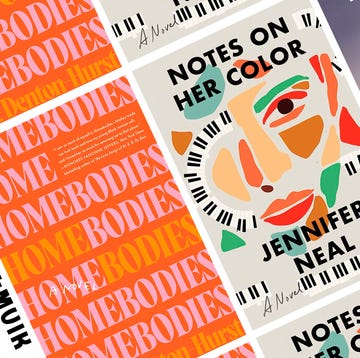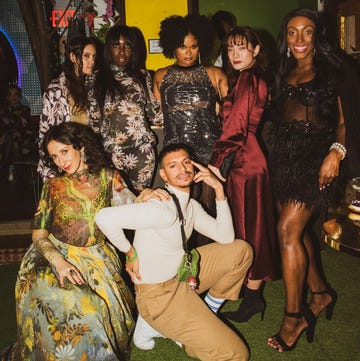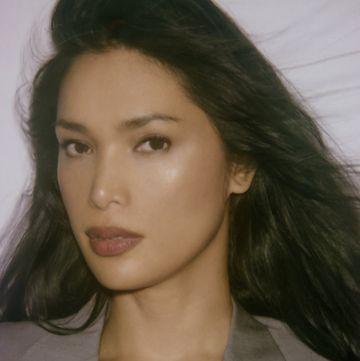Cece, the main character of Nicole Cuffy’s new novel, Dances, is in an impossible position. After years of toil and study, she’s been promoted to principal dancer in her ballet company, the first Black woman to be so recognized. And though she’s savvy enough to understand the optics of being a first—that she has to, as the well-known saying goes, be twice as good and work twice as hard—she’s still young enough to hope she can win the game of artistic fame while preserving her true self. But what does that self consist of? In this close psychological study, Cuffy draws a complicated portrait of an artist as a young Black woman within the restrictive world of classical ballet, a world built upon the logical fallacies of white supremacy. Cece’s mind is full of contradictions. She’s hyper-aware of her Blackness in the ballet company, but—at least at the start of the novel—she doesn’t have many present-day ties to other Black people and Black dancers. She seems at times unable to find celebration or home within Blackness. After she's gotten her promotion, she thinks, Dancers, we understand ourselves through the spectator’s gaze. In the mirror I could see there was nobody like me.
Contradiction, of course, is what good fiction is made of. Here, Cuffy speaks with Bazaar.com about creating complex female characters, the challenges of writing about dance, and the connections between ballet training and the craft of writing.
Can you talk a little bit about writing and creating a character who in some ways is hyper in control of her body and how she’s moving through the world, and in other ways not really in control at all, and who has almost an emotional blind spot?
More From Harper's BAZAAR

I think that double consciousness sort of acts on multiple levels for Cece. On the one hand, she is Black, she’s culturally Black, and she’s Black in a way—and this was important to me—that is going to be less comfortable for a predominantly white audience. She’s dark-skinned, she has coarse hair. Those details were important to me, because I didn't want her to be too palatable for the classical ballet world, which, when it does center Black women, traditionally tends to focus on lighter-skinned Black women who are, at least the way they physically present, a little bit more proximal to whiteness.
She’s most of the time immersed in this predominantly white world, which means a few things for her. She can’t help but to notice that she’s different from everybody else. She comes from a completely different culture on some levels, and she’s physically different from her coworkers and her peers. And not only is she different, but she would have been immersed in a world that would have told her that the ways in which she’s different are negative. A Black female body, in classical and neoclassical ballet, is not seen as beautiful, not seen as delicate, not seen as worth saving by a romantic hero in a classical story ballet.
Even if she doesn’t necessarily believe that on the surface about herself and about other Black women, she would have grown up in an environment that would’ve indoctrinated her that way, the same way that it indoctrinates all of its white and non-Black dancers. So there’s kind of this constant tension between her pushing against that narrative but also having internalized some of it herself.
And then there’s also just the double consciousness of existing as a Black person in a country that was founded on white supremacist principles. We all do this, even if you’re not Black. If you’re non-white, you do this where you have an understanding of who you are as an individual, but then you also have an understanding of who you are within the context of whiteness. And that’s part of what Cece is struggling with as well. How does she, especially now that she’s been pushed onto this much broader stage, sort of reckon with her understanding of herself, which is a bit tremulous because of how she’s been indoctrinated by the classical and neoclassical ballet world? How does she understand herself within the greater context of whiteness and being a Black representative, now that she’s been promoted?
There is an interesting play between control and lack thereof, because ultimately, if you are professional in dance, more often than not your body’s going to break down at some point. It’s just too physically demanding. Things that you’re asking your body to do, particularly the women, is outside of what our bodies are supposed to do … eventually, your body does start to slip out of your control.
There’s a moment in Cece’s internal monologue when she thinks, My toe isn’t supposed to be near my ears a very slight sentence. She acknowledges, My body is not supposed to be doing this, and she can feel the physical strain.
Right. And I think that’s so interesting, too, about ballet is that it really is a career path where you are trying your hardest not only to achieve perfection, but to control your descent into injury, into retirement, really. Female dancers in particular don’t tend to dance for these super long careers. If they make it into their 40s, they’re doing really, really well, and that’s so young to be retired. But in the dance world, that’s normal, especially if you’re a woman.
Can you talk a little bit about writing a complicated mother-and-daughter relationship, like the one between Cece and her mom?
I wanted to really think about who Cece is and where she came from. Part of the tension that I’m playing with in this story is the tension between culture and the career path that Cece’s chosen. On the page at times, and I think certainly to Cece at times, her mother reads as maybe unsupportive or maybe not really understanding her daughter’s career path. But I think what’s really going on with Cece's mother is simply that she is scared for her daughter because she knows that she lives in this predominantly white space and she knows what that means. She knows the danger that she’s in, both psychological and physical danger, and she wants her to do well, she wants her to be okay, she wants her to be safe, and so she’s trying to foster that safeness the best way that she knows how.
That complexity falls under the umbrella of Blackness and identity, versus existing as a Black person in white spaces or predominantly white spaces. Even though they don’t always get along, they don’t necessarily have the warm-and-cuddlies for each other, there is this immense love between them.
Cece loves her mother, and her mother really loves her children. Finding different ways to write love, especially parental love, is always interesting because there’s more to it, right, than either you}re a supportive parent and therefore you love your kids, or you’re not a supportive parent and therefore you don’t love your kids. There’s a lot in between those extremes.
Writing about dance is a notoriously difficult thing to do. How did you approach writing about Cece’s movements, the dancing at the center of this story?
The first thing I considered was perspective. This story is told in a first-person narrative. Cece is a dancer, so she has this language. She’s probably not naturally going to be doing a lot of translating. You don’t necessarily need to know what a fouetté is to understand that Cece is asking her body to do something difficult. But we also live in the digital age, so if you do want to know what a fouetté is, go to YouTube, look it up. That was part of my motivation as well: to get people interested in what ballet looks like.
Are there any similarities between the craft of fiction writing and the craft of dancing?
They’re both a form of storytelling, really. With dance, you’re telling a story with the body; and with writing, you're telling a story with words. Both of them require a sort of toughness.
In dance, you need this physical and emotional toughness, and if you’re going to pursue a career as a writer, you need this very sort of healthy emotional toughness. These are both worlds where you experience a lot of rejection, you experience quite a lot of criticism. Both of these career paths are ones that get conflated with your sense of self. I not only do writing, I am a writer. That’s part of how I think of myself. And I think the same can be said of a professional dancer. It’s not just what they do, but it’s also part of who they are because they, in the case of dance, have spent probably a lifetime up to that point honing their craft and striving for perfection. And I know that at least in my writing, I’m always striving for perfection, or as close to it as I can get.













